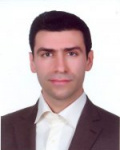| Authors | مجتبی صالحی,سعید ملک سعیدی,حمیدرضا فرنوش,Nai Mui Ling Sharon,Ganesh Kumar Meenashisundaram,Manoj Gupta |
|---|
| Journal | POWDER TECHNOL |
|---|
| Page number | 252 |
|---|
| Volume number | 333 |
|---|
| IF | 3.23 |
|---|
| Paper Type | Full Paper |
|---|
| Published At | 2018-06-11 |
|---|
| Journal Grade | Scientific - research |
|---|
| Journal Type | Electronic |
|---|
| Journal Country | Iran, Islamic Republic Of |
|---|
| Journal Index | ISI ,SCOPUS |
|---|
Abstract
Selective laser melting (SLM) of magnesium (Mg) is very challenging due to the strong oxidation tendency of Mg. This study investigates interaction of Mg powder with an ultra-high purity (99.9999%) Ar gas using the thermogravimetric analysis (TGA) technique at different heating rates (5, 10, 15, 20, 22.5, 25, and 28 °C/min.). The results showed that Mg powder reacted with even a very low oxygen content present as an impurity in the Ar gas to form MgO at temperatures higher than 400 °C. With increasing heating rate, the onset of oxidation shifted to higher temperatures. Furthermore, two distinct thermal behaviour in terms of mass gain was observed for the low (i.e. 5, 10, and 15 °C/min) and high heating rates (i.e. 20, 22.5, 25, and 28 °C/min). Activation energies of oxidation for Mg powder in Ar gas was derived from the Kissinger–Akahira–Sunose (KAS) method which ranged between 18 and 174.3 kJ/mol. Supported by SEM investigations, remarkable differences in the values of calculated activation energies indicated that the oxidation is governed by two different mechanisms at the low and high heating rates. The results of this study provide useful insights to control oxidation of Mg during SLM process and during recycling of used Mg powder.
